We occasionally link to goods offered by vendors to help the reader find relevant products. Some of these may be affiliate based, meaning we earn small commissions (at no additional cost to you) if items are purchased. Here is more about what we do.
Cast iron cookware has been a favorite of professional chefs and home cooks alike for hundreds of years. It’s so widely used and highly recommended because it’s able to hold heat, withstand high heat, cook evenly, be naturally nonstick, and last for decades when well taken care of.
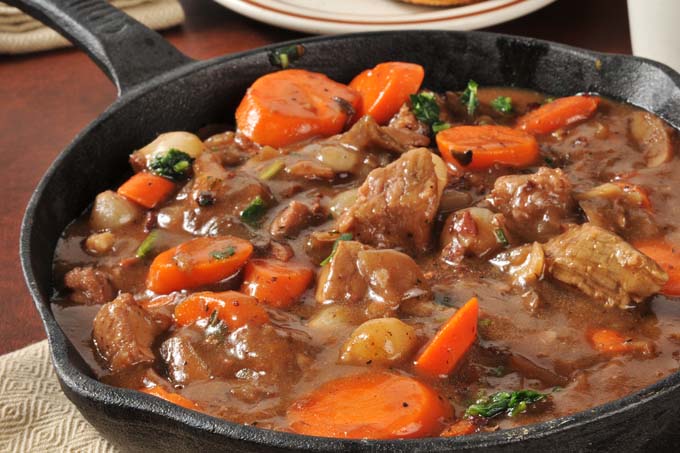
Most people who spend any time in the kitchen will tell you it’s a staple of their cookware collections. In fact, if you’d like a complete guide for the very best types of pans and skillets for your kitchen (including but not exclusively cast iron), we’ve got the perfect review for you!
I for one can vouch for this; cast iron is perfect for everything from grilled cheeses and steaks, to cornbread and deep fried fish. Here are some tips on using and cooking with your own cast iron cookware.
Seasoning Your Cast Iron
Although cast iron and its close sister, carbon steel, requires a little more TLC than your run of the mill nonstick teflon, it’s well worth it. In order to make sure your cookware stays nonstick and doesn’t rust, you’ve got to season it. If you’ve bought a piece that isn’t pre-seasoned, you’ll need to give it a thorough scrubbing and seasoning before you prepare anything in it.
The process is relatively easy even though it sounds a bit intimidating, and no, this seasoning requires nothing from your spice rack. Although, I do season my pans a little differently from how Lynne does it, there are about as many recipes for seasoning cast iron as there are for chili in Texas.
Preheat your oven to 350°F. Using a mild soap and a stiff brush or sponge, scrub out the pan. Although soap generally isn’t recommended for cast iron, it’s okay here since you’re about to season it and there’s nothing yet to scrub away. Rinse it well and dry it thoroughly! Always make sure to leave your cast iron pieces completely dry so they don’t rust.
Once you’ve made sure it’s clean, pick a fat or oil to use. This can be an animal fat, vegetable oil, or shortening, it’s totally up to you. Pour a little into the pan and use a paper towel or clean cloth to rub it around, creating a thin layer.
Place the pan upside down in the center rack of the oven. Place a sheet pan on the rack underneath to catch any drips of oil. Bake it in the oven for a half hour, then turn the oven off and let the pan cool completely before removing. It should be shiny and nonstick once it’s out!
Cooking in Your Cast Iron
Deep Frying
Once your new cookware is seasoned, there are countless things to you can make! One of the things cast iron is best loved for, especially in the South, is deep frying. This metal retains heat really well and holding a temperature is a crucial part of preparing beautifully golden deep fried food. Since oil or fat is used to deep fry, you get the added bonus of seasoning your cookware! You can use a skillet with tall sides or a dutch oven for this.

Lodge L10CF3 5-Quart Pre-Seasoned Chicken Fryer with Iron Cover available at Amazon.
If you’re using a dutch oven, pour in enough oil or shortening to cover the food (i.e. a few inches for fried chicken, less for hushpuppies). If you’re using a cast iron skillet, you’ll likely be flipping the food to fry it on each side, so you’ll just need to pour in about an inch of cooking oil or fat. Using a candy or deep fry thermometer, bring the oil or fat to 350°F and keep it there. 350-375°F is the temperature range that you’ll use to fry just about any food.
Now the hard part: actually choosing what to deep fry. I tend to go a little crazy with this. “Since I’ve already used this much oil, why not make some french fries, too? Maybe some fried cheese? Would a fried marshmallow be good? Of course it would.” To help you narrow it down, here are some of my favorite deep fried options:[1]
- Classic Fried Chicken
- French Fries
- Beer Battered Fish and Chips
- Hushpuppies
- Fried Okra
- Searing and Indoor Grilling
Cast iron can withstand high heat, making it a great choice for recipes that call for searing meat on the stove and finishing them off in the oven. You can use a cast iron skillet to make a good crust on a steak, get crispy skin on a chicken thigh, or render the fat on a duck breast, things you’d be hard pressed to do using other forms of cookware.
Once the meat has been seared, just move skillet and all to the oven and let it finish cooking to your preferred doneness.
Grilling
Another great piece is the grill pan. A grill pan is just a skillet with a ribbed bottom, allowing you to get those coveted grill marks and drain fat off meat. I like using my cast iron grill pan for making steaks in the winter; no one wants to brave Portland rain to get to the grill, even if it is for a rib-eye.
These pans are also the ideal choice for preparing burgers indoors. Patties will stay raised above any fat that drains off and yes, grill marks! You can use one of these for just about anything you’d make on an outdoor grill.
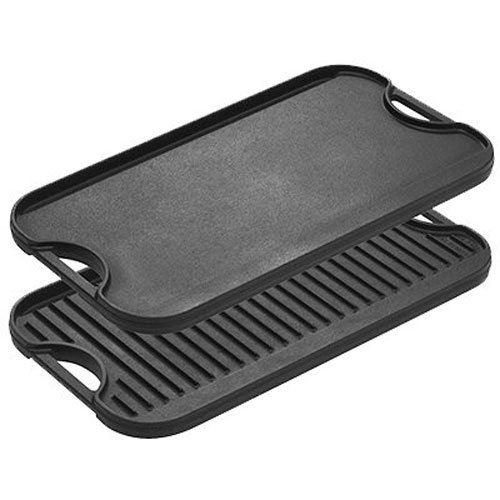
The Lodge LPGI3 20-inch Reversible Grill/Griddle is prefect for searing steaks. It’s double sided with a grill on one side and a flat surface on the other – meaning that you can use both for traditional BBQ and for cooking up pankcakes and eggs! Works over a campfire OR two burners on your stove.
Here are some great recipes that call for searing meat or using your grill pan:
- Cooking the Perfect Steak
- Pepper Jack Stuffed Jalapeño Burgers
- Seared Duck Breasts with Honey, Soy, and Ginger
- Greek-Style Pork Chops
- Pan-Grilled Salmon with Red Pepper Salsa
Baking
One of cast iron cookware’s lesser known strengths is that it’s great for baking! The metal spreads heat very evenly, which means a cake will bake without any under- or over-cooked spots.
A simple way to use a cast iron skillet for a delicious dessert is to prepare fruits such as peaches as a “crumble” Add the fruit and some butter and heat on the stovetop until the fruit chunks are a little soft and juicy, top with a crumble made of oats, flour, brown sugar, baking soda, cinnamon, and a little more butter, then pop the whole thing in the oven and bake until done. No need to use a baking dish, a cast iron skillet can do it all!
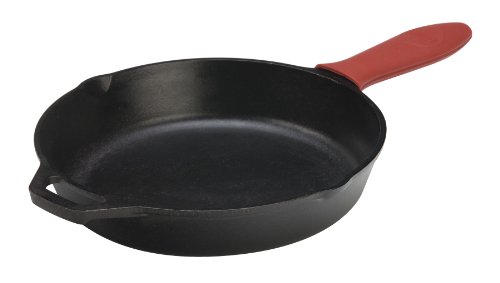
Lodge L10SK3ASHH41B Pre-Seasoned, 12-inch Cast Iron Skillet
A 12-inch Lodge Pre-Seasoned Skillet (with a red silicone hot handle holder included) is perfect for baking up some nice southern style cornbread or a pizza and is available from Amazon.
Cornbread is traditionally baked in cast iron, too! Try this version that includes jalapenos for a new twist on an old classic.
You’ll also find plenty of recipes for biscuits, cobblers, giant cookies, and other baked goods all baked in cast iron frying pans or dutch ovens.
Soups, Stews, and Braising
Cast iron pots, called dutch ovens, are ideal for soups, stews, and braising meat because they can hold heat for a long time and distribute it evenly. Unlike pots, pans, and skillets made out of thinner material, you won’t need to worry about the bottom of a dish burning if you aren’t able to stir it constantly.
When preparing a stew, soup, or braising meat in a dutch oven, you can brown the meat and soften vegetables on the stove, add remaining ingredients, then move the whole thing to the oven to finish cooking. A dutch oven is oven safe, which ultimately means fewer dishes for you!
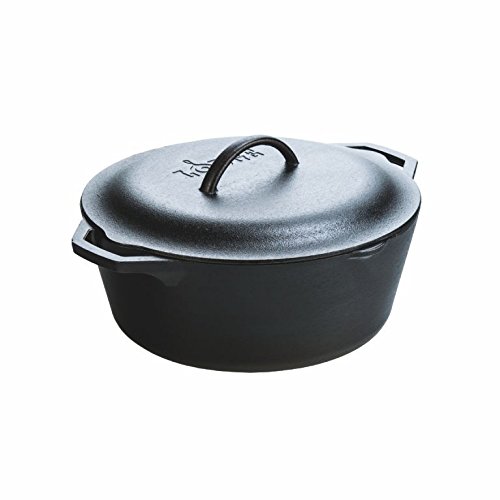
Lodge L8DOL3 Pre-Seasoned 5-Quart Dutch Oven with Dual Handles available from Amazon.
Here are some recipes to make in your dutch oven:
- Braised Short Ribs
- Thai Sweet Potato Soup
- Beer Braised Beef Stew
- Chicken and Dumpling
- Perfect Pot Roast
These are just a few ideas to get you started. Make sure that you always dry your skillets and dutch ovens thoroughly and re-season them periodically so you can get the most from these multi-purpose kitchen tools!
Before you delve into your next project in the kitchen, see if it’s something you can try making in your cast iron. You’ll find that the cast iron gives it another layer of flavor and likely cook it better than your other frying pans and cooking vessels.
About Chelsea Miller
Chelsea Miller, born and raised in Portland, Oregon, graduated from the University of Oregon where she discovered both her love of football and cooking great food. She's the founder of the food blog "A Duck's Oven" and began writing for Foodal in 2014.

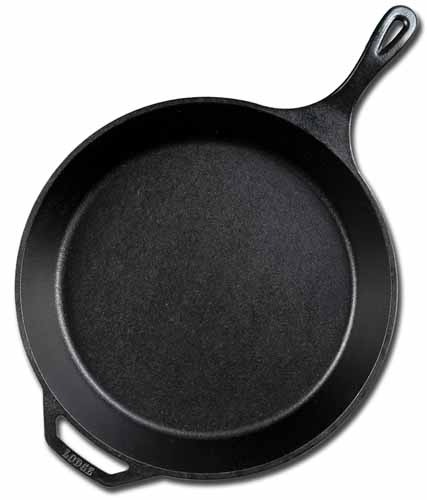
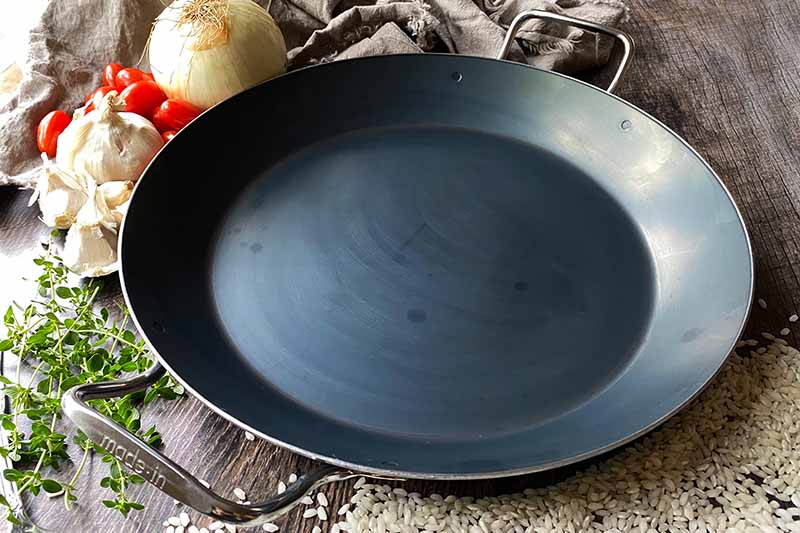
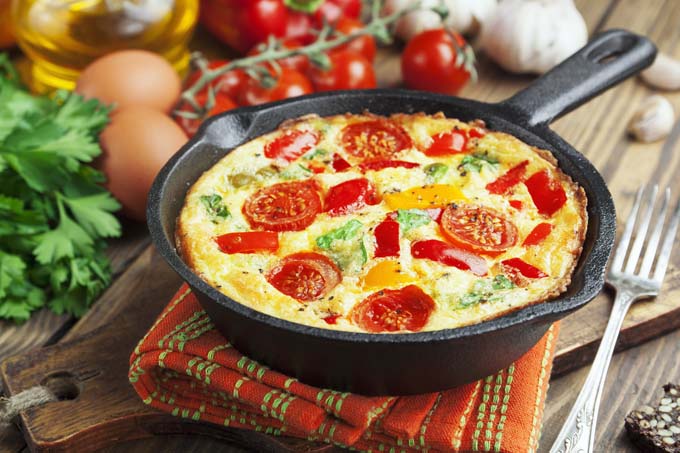
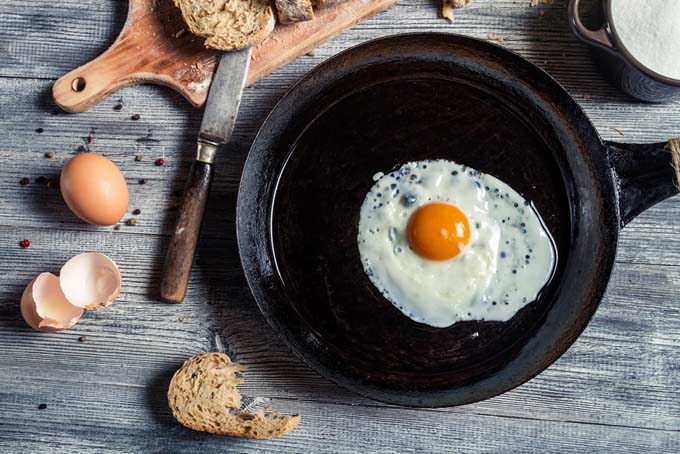
The cast iron grill pan was a staple of my mom’s kitchen when I was growing up. No other grill pan has ever come close to the durability of that pan, and nothing ever stuck to it. What’s not to love about some nice grill marks on your steak?
I think you’ve convinced me. I had one cast iron pan years and years ago (before the days of the internet) and tried to season it based on the instructions I got out of a book from the library. It was a hot mess. It had a sticky, gloppy, thick residue/coating after I was done and I still don’t have the slightest clue how I messed it up that bad. I actually threw it away and vowed to never touch cast iron again.
I think I’m going to ask my mom to buy me one for my birthday. You make it sound so easy!
Great article, very informative and detailed. Cast iron is long time favorite of mine, you get excellent value for money and food doesn’t stick as easily.
I have a couple of different sizes of cast iron skillets, but I would really love to get that cast iron grill pan you have listed here. We do a lot of grilling and in the winter time we could do more of it inside! I’ll bet this would make some really yummy quesedillas and pancakes, in addition to grilled steaks and burgers.
My grandma was a cast iron utensil kind of woman when i was growing up, i always used to have burns from touching those ‘evil’ metal pans as i would call them, it was my curiosity that was faulty and hence the clumsiness of it all would get me injured…i grew up loathing such type of pans, i guess i need to grow out of that fear and purchase some for my own kitchen use…its only that they take time to heat up as well as cool down, i’ll have to be cautious in that regard then.
That has remindd me how scared I used to be of the pressure cooker when I was a girl! It was a noisy, rattling thing which would “spit” at you every time you went near it! Thankfully, designs have changed since then!
This article and the other one here on this blog about how to restore old cast iron, makes me want to go and buy a nice cast iron skillet and dutch oven. I used to have a few cast iron pieces, but no more (as far as I know, unless some are in packed away in my garage). I think that I might go and look in Goodwill or someplace like that and see if I can come up with some vintage pieces, might have to buy new though. Great article, and very easy instructions on how to season.
I love my cast irons and want to invest in more. When it comes to great cooking, it definitely plays a large roll. The cookware can make or break a dish in my honest opinion, so knowing how to properly maintain them is essential for both amateur and professional cooks alike.
Growing up the only pots and pans my parents owned were cast iron. Everything from hamburgers on the stove top and cornbread in the oven was cooked in one. We even took one camping with us. For the past 20 years I have slowly been building up my collection from thrift stores to yard sales. I want to have a set that can rival my parents. Cast iron has definitely proven to me there is no substitute!
I’ll be honest here. I quit using Teflon since I read about the link between it and alzheimer’s over a decade ago. I have used cast iron, stainless steel, and lately ceramics ever since and don’t miss non-stick Teflon at all.
If you season stainless steel properly it is almost as non-stick as Teflon pans and a hack of a lot durable. Ceramic pans are virtually non-stick without seasoning but are even better with a light coating of oil before use and during storage…you really do not have to use much at all and are better off with a oil mister than a brush…although a paper towel with a dab of oil poured on it works well for rubbing.
Cast iron now, Oh My! Its not as easy to use as some of my other pans, but the results for foods such as biscuits and especially cornbread make it well worth any extra cleanup involved. It also can make a heck of a deep dish pizza too if your over can make it to that magic 550 degrees that is the secret but essential step to making a proper deep dish pizza.
I use nothing but cast-iron now because I have had so much success with it. I read somewhere about rubbing small granules of salt before adding the oil during seasoning. This works well when you are trying to re-season after a rusting.
I love frying in them too, and usually opt for fish. I’ll sometimes leave the oil in the pan for a few days to reuse it and let the pan get maximum seasoning.
With baking, I’ve noticed the results you get in the end vary wildly from other types of cookware, so plan accordingly. The cast iron stuff is usually better, but since they can get hotter sometimes you need to have a small amount of buffer oil oerbutter for the bottom of biscuits, etc.
I’ve been spreading the gospel of cast-iron as much as I can. You really don’t need much else. I was at Wal-Mart today and wanted to splurge on a ribbed griddle, but alas I do not have a kitchen right now since I am in transition. Too bad, it was a good price.
I love my cast iron skillets at home. It has been used from making pancakes to hamburgers. I once saw my mom make cornbread in the skillet and I thought it was strange. I’ve been used to using traditional cake pans when I make cornbread. Now I know it really can be used for baking as well.
the dish photographed looks delicious!!!
where can i get the recipe pls 🙂
I am terribly embarrassed to admit that for years I have been getting the seasoning method only halfway right! I have always just given my cast iron pots a once over with some oil and put them back in the cupboard like that! It is a testament to their durability that they have survived my ignorance all these years. Oh well, lesson learnt! Glad I stumbled across this, thank you for sharing.